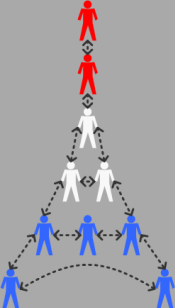
The Project
  |
PARIS (Pattern-based ARchitecture for Service Interaction) is a research training project that is supported by a Marie Curie Intra-European Fellowship within the 6th European Community Framework Programme. |
Overview
PARIS is placed in the multi-disciplinary context of distributed information systems technology for virtual organisations and targets combined aspects of software engineering methodology and distributed middleware technology.
In virtual organisations, business processes are decomposed with respect to core competencies of its partner organisations. These assets are continually re-integrated with respect to changing requirements of customers and markets. Each such constellation implies a specific interaction procedure between the partners that has to be implemented by an operative process-chain. The more dynamic, the more the virtual organisation relies on integrated ICT.
Service-oriented Grid architectures promise effective means to share functions and processes. Yet, gaps remain between technology and its application: the abstractions (e.g. services) are too low-level to be efficiently applied by business engineers and software engineering methodology to develop mission-critical systems on top is usually missing.
Hence, PARIS aims at two research goals: (i) high-level abstractions for organisational interaction procedures that enables efficient realisation of operational process-chains and (ii) software engineering methodology to develop information systems that enforce and control organisational constellations.
The envisioned approach builds on two software engineering concepts: patterns and frameworks. Patterns will abstract interaction procedures. For implementation, they will be plugged in a framework on top of conventional Grid Computing middleware.

The fundamental concept of PARIS is the case-specific translation of general service interaction patterns into an optimized interaction process that formates and controls participants as a virtual organisation.